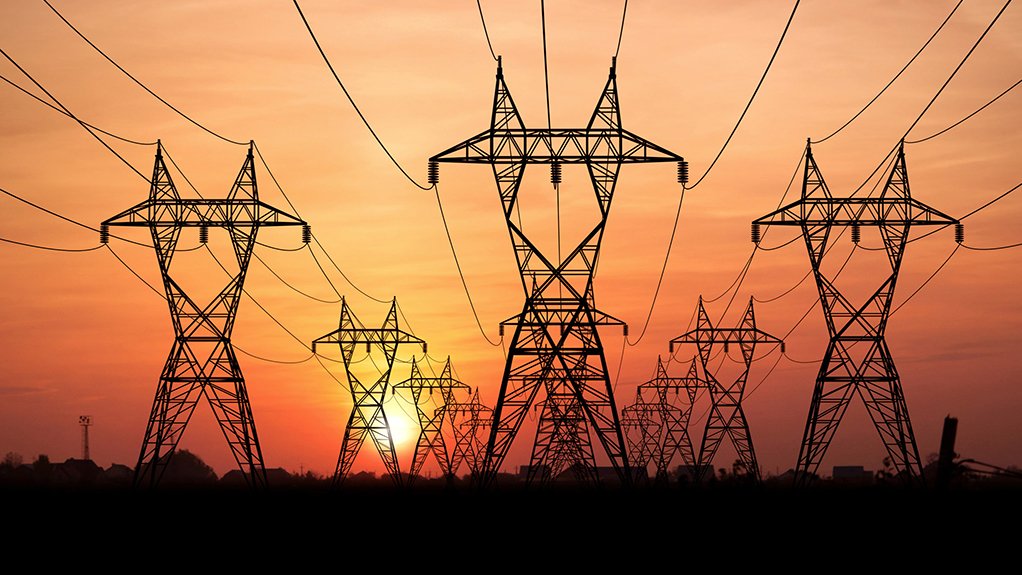Can SA finally turn the switch on its power crisis in 2023?



SILVER LINING Is the sun setting on South Africa's energy crisis?
Photo by Adobex
Stage 4 to 6 loadshedding has become more commonplace over the past few months, with many analysts expecting it to continue and possibly worsen before South Africa’s energy crisis has abated.
Stage 6 has been the highest level of loadshedding introduced so far, although several economists have made the case that blackouts have actually been worse than that, owing to load curtailment on heavy industrial users.
During December last year, however, concerns over loadshedding escalating to Stage 7 came to the fore when State-owned power utility Eskom took Unit 1 at the Koeberg nuclear power station, in the Western Cape, offline to conduct refuelling and maintenance, with the latter including the replacement of three steam generators in preparation for long-term operation.
The station is the most reliable in Eskom’s fleet, with the two units combined capable of producing 1 800 MW. However, according to Eskom, Unit 1 will be offline at least until June, with Unit 2 scheduled to be taken offline for maintenance in September.
Unit 2 will be returned to service only in 2024. If all goes according to plan, Koeberg’s maintenance will extend the plant’s life for an extra 20 years.
At Kusile, units 1, 2 and 3 were taken offline when a flue duct failed in October last year, depriving the grid of an additional 2 160 MW. Repairs are expected to take at least a year to complete before these units can return to service.
Medupi also lost about 800 MW of generating capacity when a generator exploded in August 2021, which is expected to be operable again only in September 2024. With the completion of Unit 5 at Kusile, the station will be able to produce 2 880 MW by the end of next year.
When the other breakdowns across Eskom’s fleet are taken into account, more than 17 000 MW of generation capacity is unavailable, in addition to more than 6 000 MW because of planned maintenance.
Speaking at a webinar hosted by Creamer Media, titled ‘South Africa’s Energy Outlook 2023’ on January 25, Eskom board member Mteto Nyati assured that the utility’s new board had devised a clear two-year plan to alleviate loadshedding.
“This doesn’t mean that we have to wait for two years to pass before we start seeing an improvement in the current situation. It’s just that it takes that long for us to tackle the coal fleet because 80% of the capacity comes from that coal fleet. There can be no solution to loadshedding without addressing the coal fleet in the short to medium term,” he said.
According to Eskom spokesperson Sikonathi Mantshantsha, evening peak demand for the country as at January 30 was more than 27 000 MW, with available generation capacity about 25 700 MW, necessitating on average about 3 500 MW of loadshedding.
Of this capacity, nearly 2 000 MW comes from a mix of renewables, while numerous open-cycle gas turbines have been regularly in use as well to supplement capacity, burning rapidly through billions of rands worth of diesel – a costly and carbon-intensive option.
While these numbers fluctuate daily, the basic outlook remains the same: a shortfall of 4 000 MW to 6 000 MW persists – a deficit that will only increase as the already ailing generation fleet continues to deteriorate, with much of it approaching the end of its life.
Interventions
Government interventions have allowed for the procurement of additional generation capacity through the Independent Power Producer (IPP) Office, as well as regulatory amendments to enable embedded generation investors to add new capacity.
These projects, according to Eskom, are estimated to exceed 9 200 MW and will alleviate loadshedding when they come on line.
“Over the past two-and-a-half years, we have managed to get about 5 600 MW in different stages of procurement. I know that it’s not enough and, given the crisis that we are in, there’s a lot that still needs to be done. Of that number, we have reached legal close with 1 900 MW, while 570 MW is already under construction. We are expecting some of the power to come on line by the end of this year,” IPP Office head Tshifhiwa Bernard Magoro said during the webinar.
The IPP Office plans to finalise the risk mitigation and reach commercial close by the end of next month with the remaining 13 preferred bidders that have already signed legal agreements, with financial close for 1 000 MW from Bid Window 6 planned for April.
Magoro added that plans were in the works to roll out the next bid windows, starting with battery storage, which he said had been ready for some time.
“We’re just waiting for certain approvals from the National Treasury and the Department of Trade, Industry and Competition. The battery storage programme should have gone out in September last year, but we are now at an advanced stage to get it out to the market.”
Further, the IPP Office was working on a 3 000 MW gas programme and was working closely with State-owned enterprise Transnet and other stakeholders to unlock South Africa’s ports for the delivery of gas into the country, he noted.
In addition, Eskom’s planned maintenance, when completed, is expected to return about 6 000 MW to service by the end of 2024.
According to a draft roadmap presented by the National Energy Crisis Committee in January, several thousand megawatts will, hopefully, be added to the grid using a variety of sources.
An additional 1 625 MW will be imported from neighbouring countries, 1 597 MW will be sourced from embedded generation projects and 1 350 MW from the standard offer and emergency generation programme, while about 850 MW will potentially be added through rooftop solar.
“We need to create an enabling environment so that all South Africans can participate in helping us to solve loadshedding through rooftop solar. We need to create incentives for them to do that,” Nyati said.
Other metros should perhaps follow the example set by the City of Cape Town, which recently announced an exemption granted by the National Treasury that will enable the city to pay cash for electricity supplied to the grid by companies and households that have invested in small-scale embedded generation capacity such as rooftop solar.
Further, the draft roadmap indicates that about 250 MW will be derived from demand- response and energy efficiency programmes, with an additional 200 MW to become available when Eskom rolls out the first phase of its battery programme. An additional 70 MW is expected to come from existing IPPs that have surplus energy.
If all these sources of generation capacity come to fruition, the worst of the shortfall should be covered. An additional 8 665 MW from a variety of sources could serve to turn the tide in 2024, should all go according to plan.
The roadmap also shows how more than 29 000 MW of additional capacity could be added from public and private procurement initiatives beyond 2024, effectively putting an end to South Africa’s energy crisis.
“It’s been a long and frustrating journey, particularly given that we had five years where nothing was happening in this space. We had to rebuild the whole industry. We’ve just now received a letter from the Department [of Mineral Resources and Energy] stating that there is another 14 700 MW that we have to procure in the next few years. So, we are sitting with about 27 000 MW of capacity that the IPP Office has to procure,” Magoro said.
Minerals Council South Africa told Engineering News & Mining Weekly last month that as much as 9 000 MW of energy projects – comprising solar, wind, gas and battery storage – were in the private-sector pipeline.
It added that the mining industry has a pipeline of 7 500 MW in electricity generation projects – either on standby or in development – worth more than a combined R150-billion. Of these, about 3 000 MW are expected to come on line before the end of 2024.
Challenges
Magoro stated that one of the major challenges facing IPPs was transmission congestion, with limited infrastructure available for connecting to the national grid in some of the country’s most attractive areas for renewable- energy installations, such as the Northern Cape.
While IPPs will play a significant role in helping to ensure a more stable electricity supply, much of it still comes down to Eskom’s getting its own assets and personnel in order.
Nyati said resolving Eskom’s woes was not only technical in nature: ongoing sabotage by criminal elements remained a significant area of concern, while a dysfunctional company culture, where there is a lack of accountability, severely undermined the utility.
“We’ve got weak internal controls and poor governance. That’s an issue. You can fix the funding, you can fix everything. But if you continue to still have weak internal controls, you are going to have a problem. We have good managers in Eskom, but we also have a fair number of managers who are not managing, leaders who are not leading. This leads to poor discipline that, in turn, leads to people not following standard operating procedures.”
A tender would be issued in the near future for a company to partner with Eskom to drive organisational excellence, Nyati said.
Article Enquiry
Email Article
Save Article
Feedback
To advertise email advertising@creamermedia.co.za or click here
Comments
Press Office
Announcements
What's On
Subscribe to improve your user experience...
Option 1 (equivalent of R125 a month):
Receive a weekly copy of Creamer Media's Engineering News & Mining Weekly magazine
(print copy for those in South Africa and e-magazine for those outside of South Africa)
Receive daily email newsletters
Access to full search results
Access archive of magazine back copies
Access to Projects in Progress
Access to ONE Research Report of your choice in PDF format
Option 2 (equivalent of R375 a month):
All benefits from Option 1
PLUS
Access to Creamer Media's Research Channel Africa for ALL Research Reports, in PDF format, on various industrial and mining sectors
including Electricity; Water; Energy Transition; Hydrogen; Roads, Rail and Ports; Coal; Gold; Platinum; Battery Metals; etc.
Already a subscriber?
Forgotten your password?
Receive weekly copy of Creamer Media's Engineering News & Mining Weekly magazine (print copy for those in South Africa and e-magazine for those outside of South Africa)
➕
Recieve daily email newsletters
➕
Access to full search results
➕
Access archive of magazine back copies
➕
Access to Projects in Progress
➕
Access to ONE Research Report of your choice in PDF format
RESEARCH CHANNEL AFRICA
R4500 (equivalent of R375 a month)
SUBSCRIBEAll benefits from Option 1
➕
Access to Creamer Media's Research Channel Africa for ALL Research Reports on various industrial and mining sectors, in PDF format, including on:
Electricity
➕
Water
➕
Energy Transition
➕
Hydrogen
➕
Roads, Rail and Ports
➕
Coal
➕
Gold
➕
Platinum
➕
Battery Metals
➕
etc.
Receive all benefits from Option 1 or Option 2 delivered to numerous people at your company
➕
Multiple User names and Passwords for simultaneous log-ins
➕
Intranet integration access to all in your organisation
















